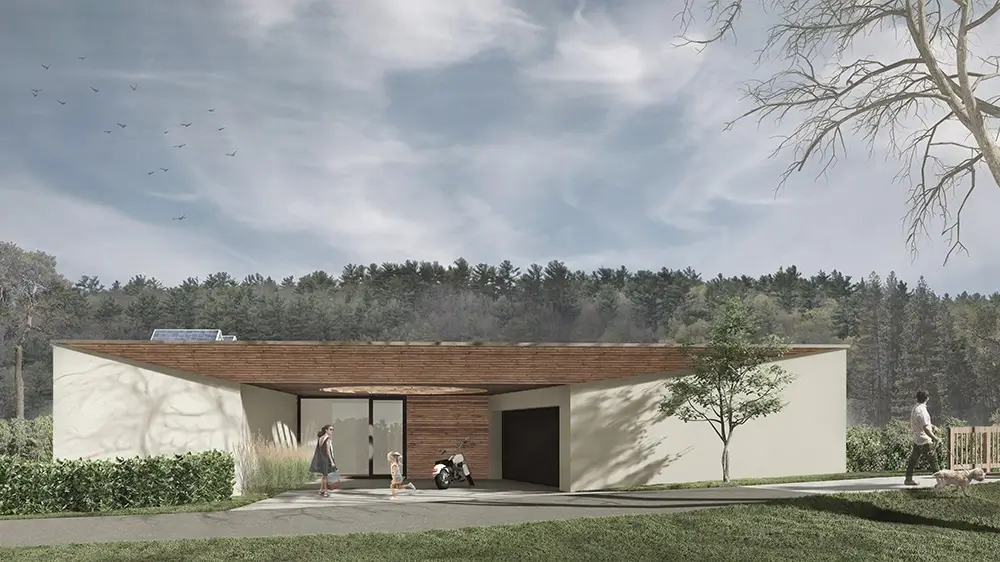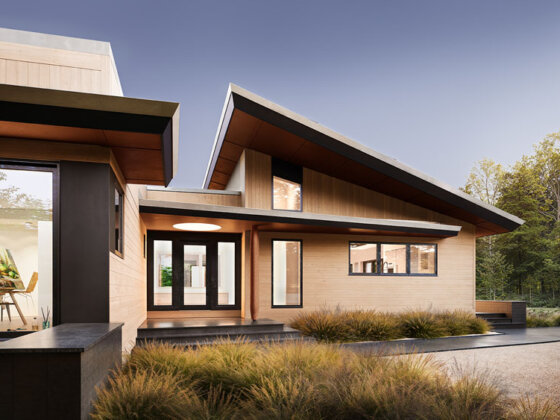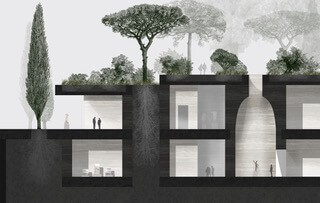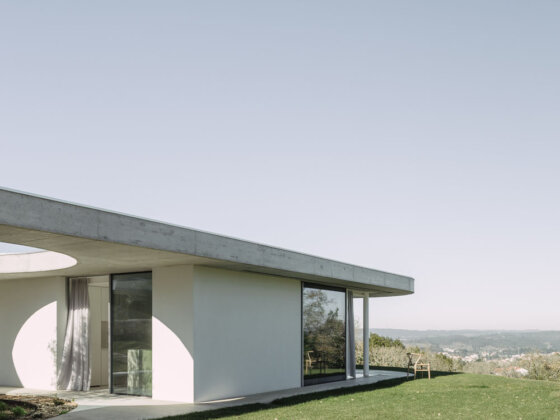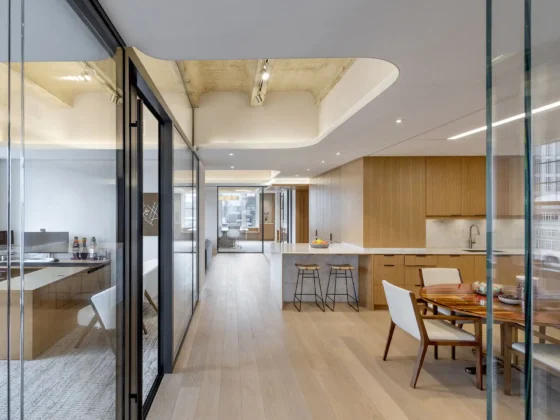Sdier, Germany
Offering a peaceful and functional retreat, Stephan Lißner of architekt Lißner designs a sustainable residence that reflects local architectural styles and materials, creating a home that feels rooted in its geographical and cultural context while maintaining a modern aesthetic.
Named the Country house, the project has been awarded with a 2024 Green Good Design by The Chicago Athenaeum: Museum of Architecture and Design and The European Centre for Architecture Art Design and Urban Studies.
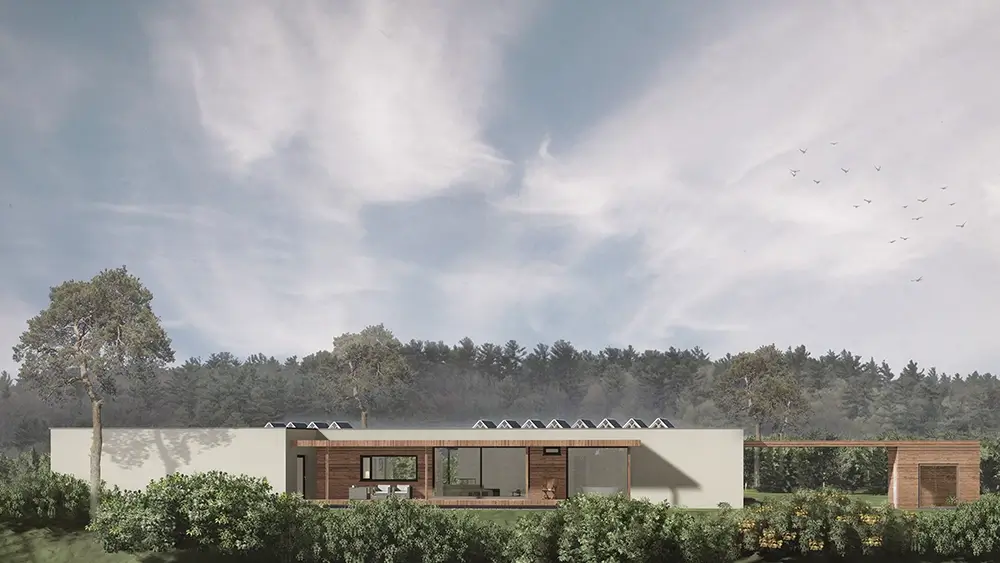
The building project takes us to eastern Saxony, just near the UNESCO biosphere reserve of the Upper Lusatian Heath and Pond Landscape. In a village of 300 people, surrounded by coniferous and mixed woodland, agricultural land and countless ponds.
The building site is located on the southern edge of the village, directly on the ditch of an abandoned railroad line. The former railroad area is overgrown and has since been declared a formal forest area.
A wooden pedestrian bridge over the ditch leads into the forest to the south.
The so called Spree cycle path from the sources of the Spree in the Lusatian Highlands to Berlin leads over this wooden bridge and directly past the house.
The house nestles parallel to the railroad ditch and is as narrow and long as possible out of consideration for the open space of the neighboring buildings. It opens to the west with a covered forecourt, thus clearly defining the entrance to the house.
After an entrance area, you enter the central, almost 80 m² living area with cooking, dining, living and working areas.
The focal point here is the panoramic wood-burning stove.
The central room is generously glazed to the south and north towards the respective terraces.
Further east is the guest area and the personal retreat zone with bathroom, dressing room and bedroom.
Finally, a covered path in the wooded garden leads to the sauna.
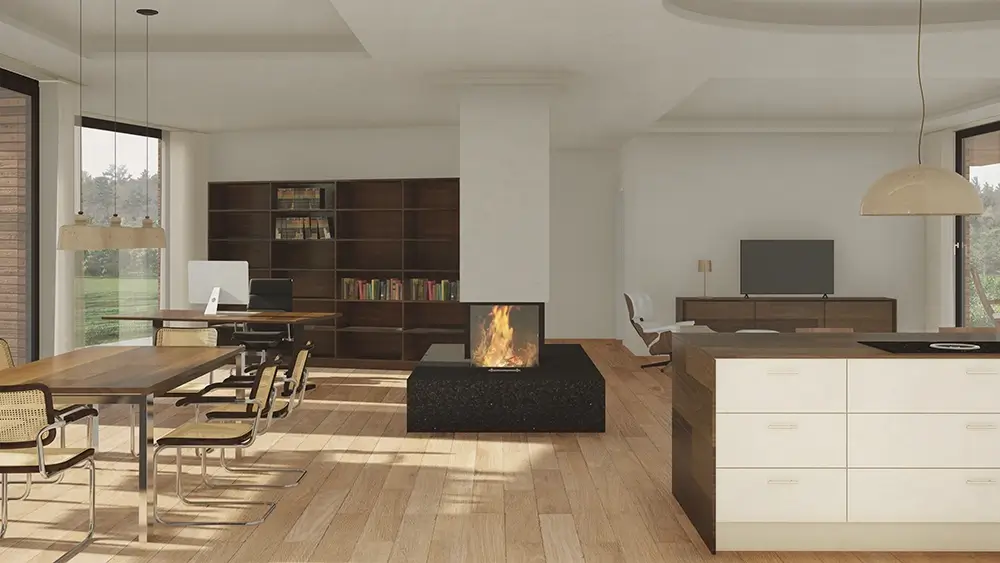
The building is single-storey and designed as a classic solid construction.
With insulated reinforced concrete floor slab against the ground, exterior walls made of sand-lime brickwork, on the one hand plastered or clinkered with a mineral thermal insulation composite system, on the other with an insulated facing shell made of larch wood.
A reinforced concrete slab forms the flat roof with extensive greenery.
To the south, a covered terrace area is attached in pure timber construction, which also provides shade in summer as thermal insulation.
Energy is supplied by an air heat pump, a photovoltaic system on the flat roof and the mentioned solid fuel stove.
Any additional energy required is drawn from the public power grid.
A ventilation system with heat recovery rounds off the energy concept and ensures a balanced and pleasant living climate.
The final energy requirement is in the range of an efficiency house 40.

Project: Country House
Architects: architekt Lißner
Lead Architect: Stephan Lißner
Client: Private
Photographers: Johanna Lißner
